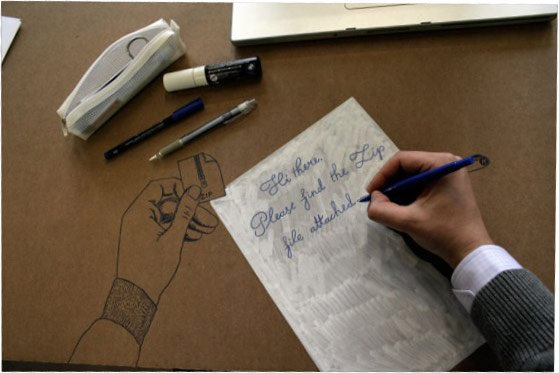
What is Creativity?
To some creativity is a mysterious process to others it is known by its results. Although it is hard to define, creativity in theoretical terms is the reorganization of experience and ideas into a new configuration. In its simplest form it is anything produced through artistic or imaginative effort. It also entails tapping into the ability and power to create through originality and imaginative expression.

The evolving relationship between technology and business application has created a demand for creativity and innovation. This demand coupled with decision making duties makes the responsibilities of the manager exciting and extremely difficult.
Most of the day to day problems that managers deal with require a healthy dose of creativity. The manager’s job is to mentally take things apart, move things around in a new and productive way while looking beyond conventional frameworks for solutions. As a way to upgrade your own creative problem solving skills this article will, define creativity, discuss managing creative people, and we will identify creativity block.

Ian Mount author of “Ashes to Ashes, Poop to Power” said
“Creativity is a function of knowledge, imagination, and evaluation. The greater our knowledge, the more ideas, patterns, or combinations we can achieve. But merely having the knowledge does not guarantee the formation of new patterns; the bits and pieces must be shaken up and interrelated in new ways. Then the embryonic ideas must be developed into usable ideas.” (Mount)
Creativity is an intangible skill, and may not be apparent to the rookie. Identifying creativity is easier than trying to understand the process. There are three overlapping domains to creativity: imagination, discovery, and innovation. The discovery component is the most relevant to managers. New products spring from creative imagination and innovation.

The Power of Creative Vision
Creative Vision is the ability to produce artistic or imaginative effort by tapping into the ability to visualize an outcome. Our visions create consequences, impact the choices we make and affect the way we make decisions. Managers can learn creative ability, by releasing their creative energies from the bonds of convention. A lack of self-confidence and narrow thinking has dampened many creative ideas. Without a vision we make choices based on what’s right in front of us causing us to react to what’s urgent.
- The impulse of the moment
- Our personal feelings or mood
- Our limited awareness of options
- Other peoples priorities
- We waver and flip-flop
Workplace Creativity: The Truth
Many managers believe they have no freedom to be creative in the workplace due to certain control issues. When we think of creative people we often think of individuals who think outside the box. We also see these creative people as nonconformists who break all the rules to get results. Recent research by Alan Robinson has busted this myth:
“We went to 450 companies in 13 countries and spoke to 600 people who’s done highly creative things, from big new innovations to tiny improvements”, he explains. Only three out of the 600 were true nonconformists. The rest were more like your average manager, much more “plodding and cautious” than most managers would expect. Other creativity studies have had similar results, he says.
One reason for the mismatch between popular perception and reality, he believes, is that so many steps are needed to bring most new ideas to fruition. Those who succeed must be able to build support for the idea among other team members, and they sometimes need a lot of practice as well. Corporate nonconformist may not have a great deal of either.” (p. Robinson)
We often associate people who are eccentric, with creativity. However, creative self-expression, unconventional clothing, and awkward behavior don’t necessarily translate into creative work and or marketable ideas.
Twenty First Century Leaders are challenged to create an organizational culture and climate that is inclusive. This allows the hidden creative talents of every employee to rise to the surface.
How to Be More Creative?
Although some people seem to have a natural knack for creative endeavors it is a skill that can be learned. With practice and attention you can develop a greater capacity of creativity.
First let’s start with what Roger von Oech calls Mental Locks, which are attitudes that get managers through the day to day activities. These same activities can stifle creativity.
- Looking for the right answer
- Always trying to be logical
- Strictly following the rules
- Insisting on being practical
- Avoiding ambiguity
- Fearing and avoiding failure
- Forgetting how to play
- Becoming too specialized
- Not wanting to look foolish
- Saying “I’m not creative.”[1]
Creativity is important to employee engagement and to entrepreneurs. As entrepreneurs and professional development trainers Cecilia and I are always seeking out opportunities to be creative. Talented employees need to be encouraged to express their creativity.
Melissa Adams Editor
http://www.stantonadams
References
Hanson, R. (2008). The Myth of Creativity, Business Week. In R. Krietner, Foundations of Management: Basics and Best Practices (p. 150). Boston: Houghton Miffilin Company.
Mount, I. (2008). Ashes to Ashes, Poop to Power. In R. Kreitner, Foundations of Management: Basics and Best Practices (p. 149). Boston: Houghton Miffilin Company.
[1] List adapted from Roger Von Oech, A Whack on the Side of the Head (N.Y.: Warner Books, 1983)
Related articles


































